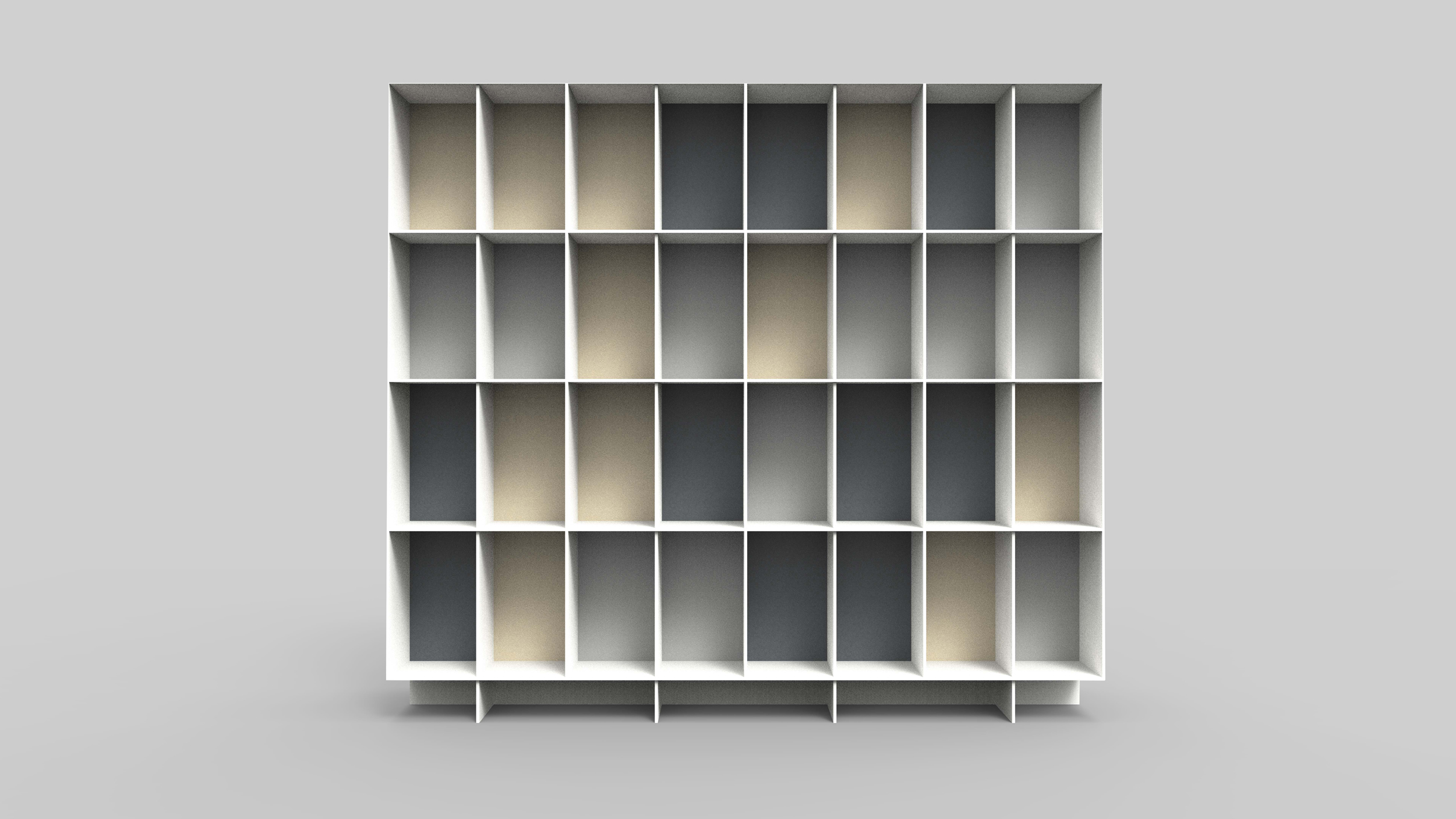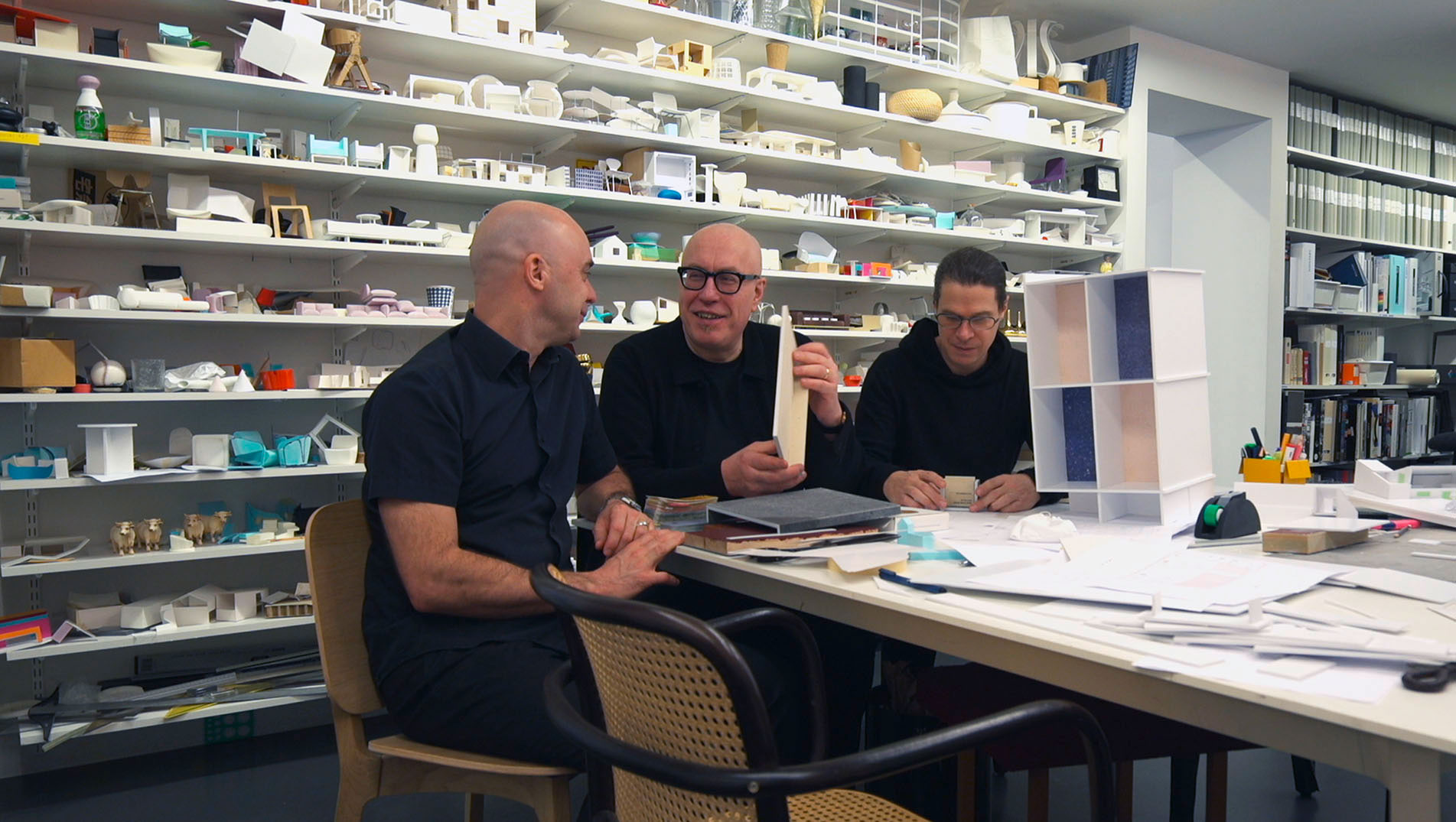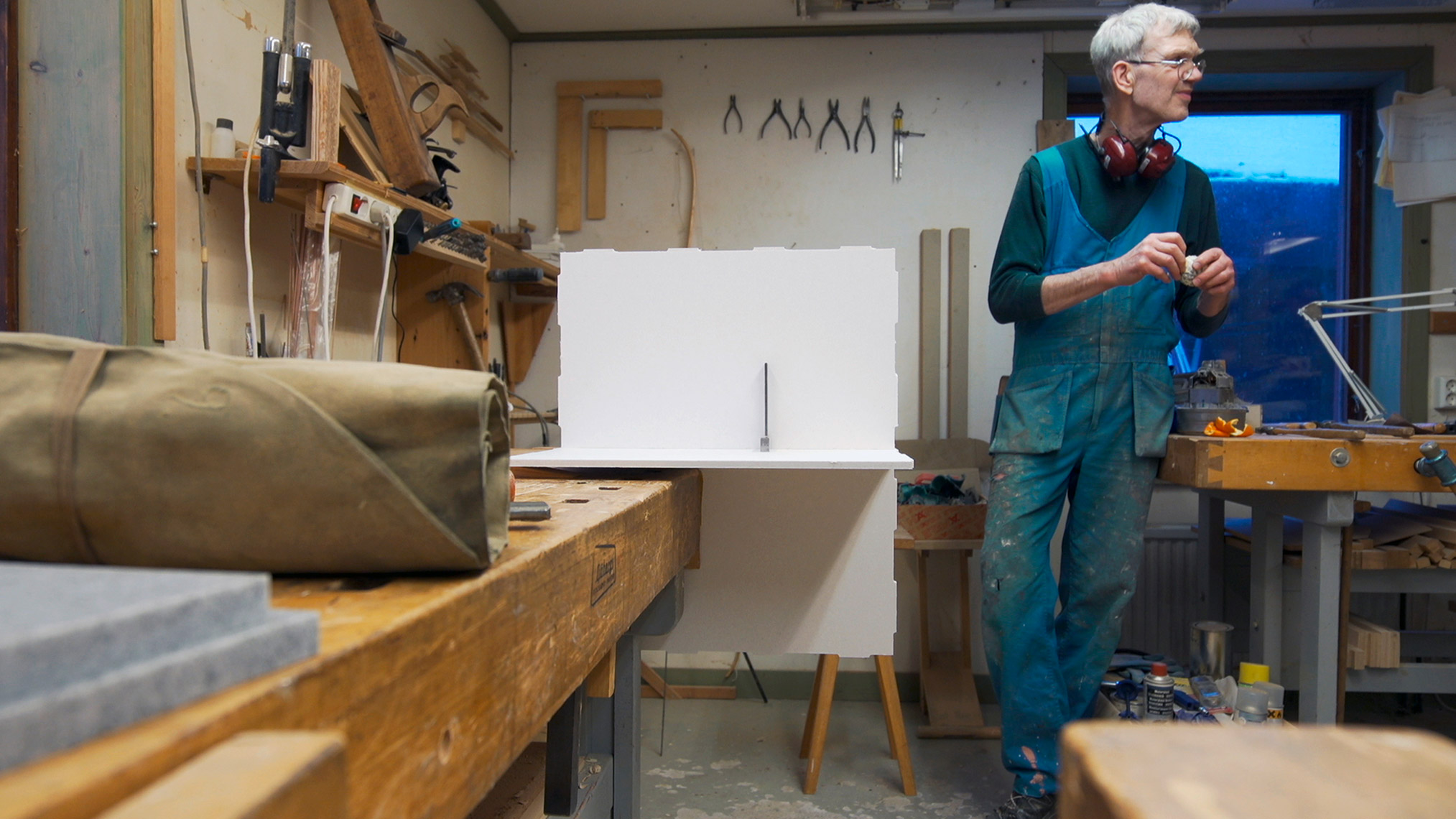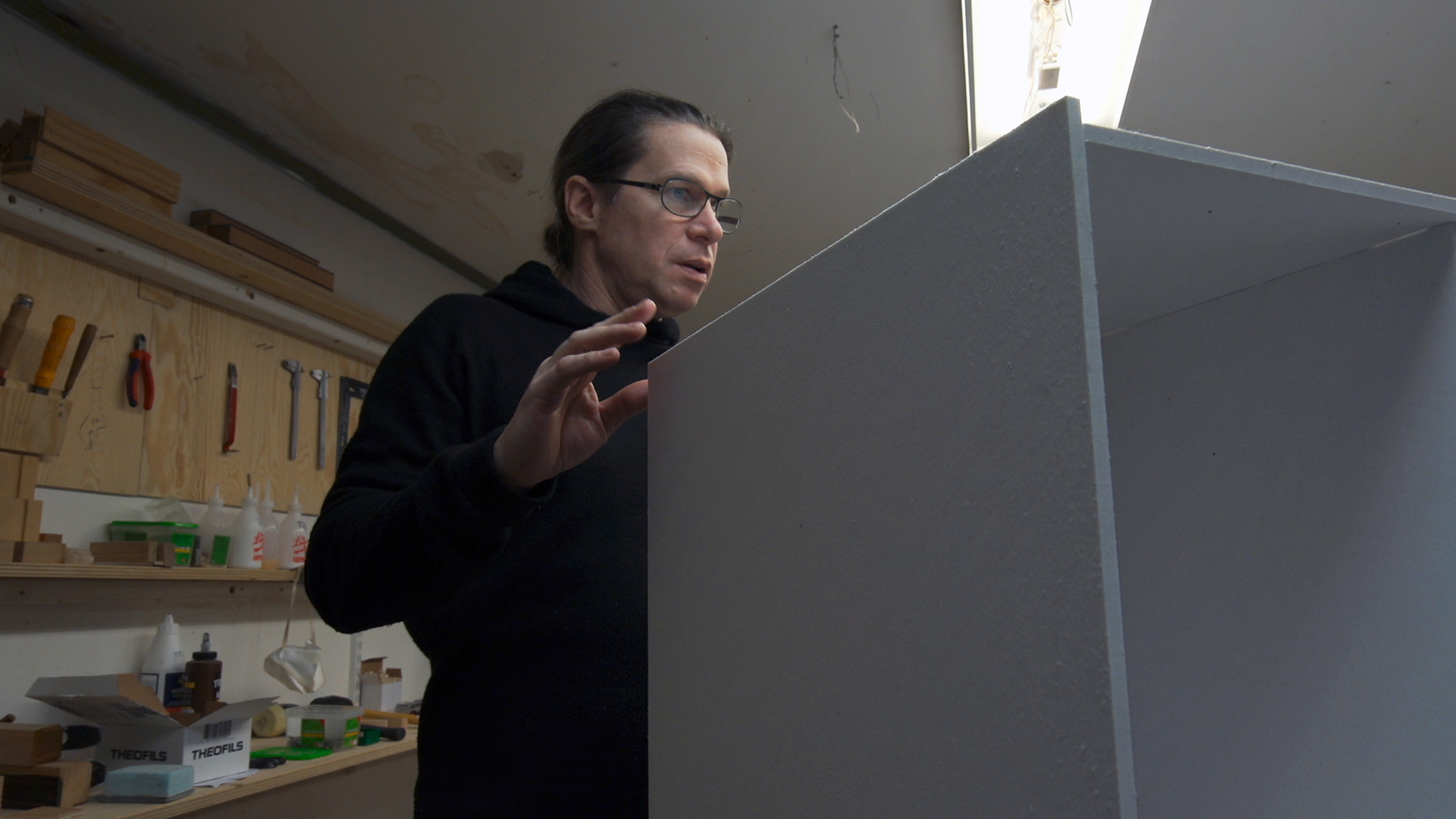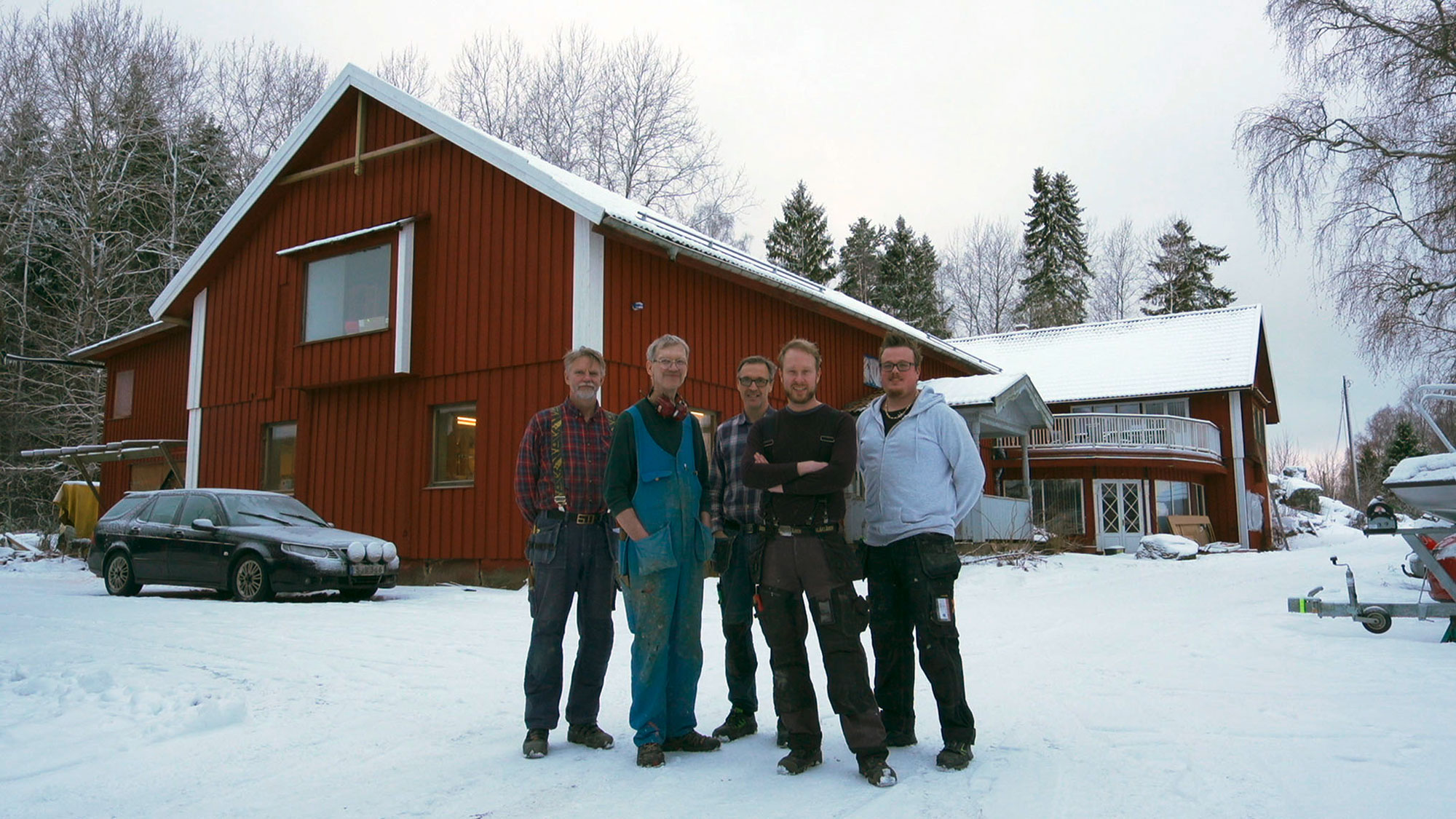Shelving from textile waste
Susanna Koeberle • 26.04.2018
Als Reaktion auf das weltweit akute Abfallproblem riefen Wickie Meier Engström, Klaus Samsøe und Ole Smedegaard das Projekt «Really: circular by design» ins Leben. Sie entwickelten einen Werkstoff aus upgecycelten Textilien: Dieses Material namens «Solid Textile Board» ist eine hochwertige technische Platte aus alter Baumwolle und Wolle aus der Mode- und Textilindustrie. Die dünnen, aber äusserst stabilen Platten bieten für Designer eine Vielzahl von Gestaltungsmöglichkeiten. Sieben internationale Designer waren eingeladen, Objekte aus diesem Material herzustellen. Ihre Entwürfe wurden auf dem Fuori Salone während der Möbelmesse Mailand gezeigt. Wir haben mit den drei Gründern der schwedischen Architektur und des Design-Trios Claesson Koivisto Rune gesprochen. Ausgangspunkt für ihren Entwurf «Bibliothèque», ein freistehendes Regal, waren Recherchen zum Raster in der Architektur sowie zur Typologie des Hochhauses.
Susanna Koeberle: What was the briefing from «Really»?
Ola Rune: It was very open, we were allowed to do what we wanted. The idea was to investigate the material. The aim is to show that this material works.
SK: How did you approach this project?
Eero Koivisto: You can see from the design that we are architects. We have interpreted the material from an architectural perspective. The idea of the shelving is pretty close to this. Thanks to the refinement of the boards, you can almost draw lines in the third dimension with them. We were inspired by a very specific building, the «Bibliothèque Nationale» by Dominique Perrault. This library was already a reference point in an art project, which we were involved in last year. And now shelving has been developed from this.
SK: What fascinated you particularly about this building?
Ola Rune: The proportions of the façade grid. We transferred the verticality of the grid to the shelving. This shape is rather unusual but also practical. It means it doesn’t need any bookends. These sections can also be used for objects because a lot of people don’t have books any more.
SK: What are the special features of this shelving?
Eero Koivisto: It’s thought of as free-standing shelving and a room divider as there are also sections on the rear. The depth brings stability. There are also minor details such as the slightly indented side walls with every second section.
SK: How did you use the colours?
Mårten Claesson: There are currently four colours for the boards. However, in the middle they are all white, which is why we also selected white as the main colour and placed the colour towards the back where you can’t see the white core of the boards.
SK: What is the importance of this design within your work?
Eero Koivisto: This product is not only beautiful from a visual and tactile perspective, but the whole idea behind it is too. It exudes positivity, which is why we wanted to be part of this story.
SK: What is the potential of such a material?
Eero Koivisto: It’s huge, but manufacturers have to be convinced first. New production processes are also required for it, which is complicated. We also don’t know yet how the material will age. With our design we hope to help increase awareness of this product.
SK: Do you regard architecture and design as separate worlds?
Ola Rune: No. Previously these two areas were strongly linked and we also wanted to achieve this from the start of our collaboration. This combination has a tradition in Scandinavia. Furniture was the natural expansion of architecture.
Photography: CLAESSON KOIVISTO RUNE
